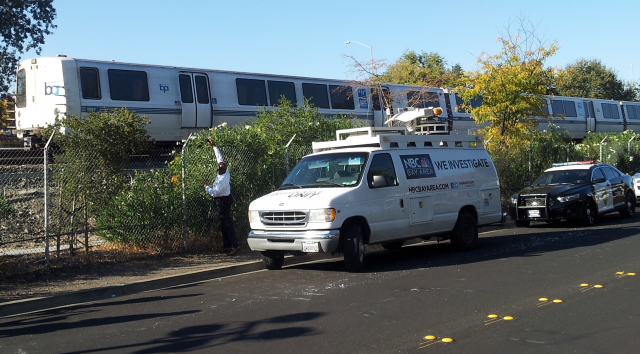
The National Transportation Safety Board is urging federal transit officials to take steps to prevent trackside accidents like the one that killed two BART workers during the transit system's strike in October.
In a letter to Federal Transit Administration chief Peter Rogoff today (embedded at the end of this post), NTSB chair Deborah Hersman said her agency still has not determined the probable cause of the Oct. 19 incident that killed Christopher Sheppard, 58, of Hayward and Laurence Daniels, 66, of suburban Sacramento. But Hersman says because of the circumstances surrounding the BART incident, the NTSB wants transit officials to immediately require enhanced safety measures for commuter-rail agencies around the country.
Those steps could include new warning devices or "positive train control" systems that allow better monitoring of trains and trackside workers and allow central controllers or workers to stop trains in an emergency. The NTSB also wants a nationwide ban on the practice of granting workers permission to work at trackside while making them solely responsible for protecting themselves from moving trains and equipment.
That last recommendation is a direct response to the BART incident.
Sheppard and Daniels were killed after venturing had ventured into BART's right-of-way between the Walnut Creek and Pleasant Hill station to look for a reported defect in the tracks there. BART's central controllers granted the two "simple approval" to go on to the tracks, a clearance that meant they were responsible for their own safety. Trains were operating in the area, and controllers issued a brief alert to crews that workers were on the tracks.